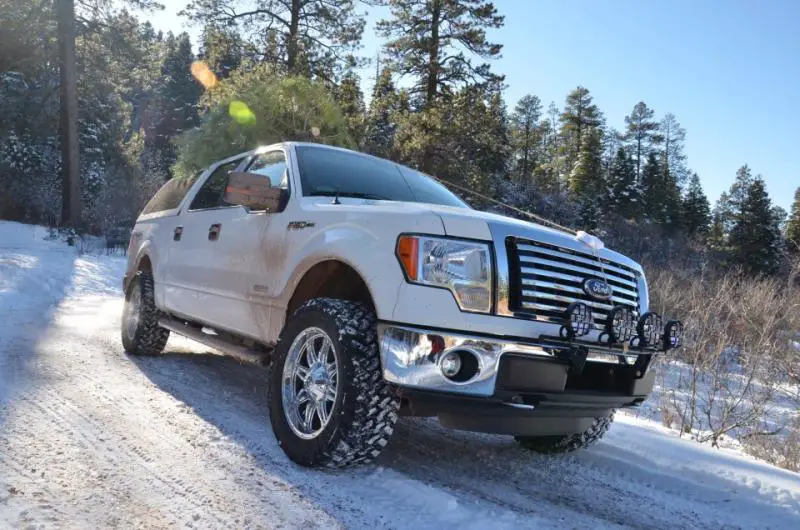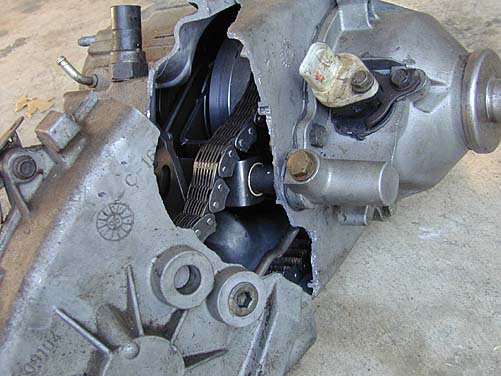A question that can pop up in your mind is how fast can you go in 4 High. I’m glad to inform you that this is the right place to do your research on the speed range of this 4WD (four-wheel drive) mode!
This guide answers many frequently asked questions about 4Hi max speed and favorable conditions for using the mode.
Keep reading for more details.
How Fast Can You Go in 4 High?
You can drive 4 High at speeds of up to 55 mph in general. The truck’s limit will depend on its make and model. It is advisable to check the vehicle owner’s manual for the speed limit of your truck just to be sure.
Remember that I have provided a table showing the maximum speed for 4WD High modes of Ford trucks and other common vehicles. See it in the next section.
4Hi Max Speed by Vehicle Model
| Vehicle Model | Maximum Speed in miles per hour (mph) |
|---|---|
| Ford F150 | 60 |
| Ford F250 | 55 |
| Ford F350 | 55 |
| Jeep Wrangler | 45 |
| Jeep Liberty | 45 |
| Chevy Silverado | 40-50 |
| Dodge Ram | 55-60 |
| Toyota | 55 |
| Toyota 4Runner | 50-55 |
The above table shows differences in speed ranges based on the vehicle model.
For example, the F150 is a modern full-size pickup requiring you to stay below 60 mph in 4Hi to drive safely in inclement (cold or wet) weather.
The limit for the F250 and F350 is 55 mph because they are Super Duty trucks that may risk sustaining damage from speeds higher than that.

(Image credit: f150forum.com)
A Jeep Wrangler should go at 45 mph or lower because it is smaller than other vehicles (e.g., heavy-duty models).
What about the Chevy Silverado’s range of 40-50 mph, which is suitable for helping the vehicle’s wheels grip the surface of icy or snowy roads well?
What to Keep in Mind When Driving in 4 High?
As a regular off-roader, you should know that it is wise to maintain the proper speed limit in various instances. Your speed will significantly affect your vehicle’s braking if you are driving on rocky, slippery, or generally low traction surfaces. I will elaborate on this later.
Are there any concerns about shifting into 4 High Mode?
Keep an eye on the road to avoid being caught off-guard by some adverse elements. You don’t want to be driving at high speeds when you reach a sharp corner or hit a blind spot. However, some situations might let you move at a higher speed than 55 mph. For example, when the road is clear and seems safe enough. Keep in mind that it is possible to shift in 4 Hi while driving. Other hazards are listed below.
- Sharp bends
- A tire bursting
- Rough surfaces
- Holes hid by debris or snow
- Animals that suddenly appear in front
Ensure that you are on low traction before switching to 4×4 High to avoid drivetrain binding. Low traction surfaces include sandy roads, wet rocky terrains, farm roads, icy routes, muddy terrains, etc.

(Image credit: rubicon-trail.com)
It is best to check the vehicle owner’s manual for concerns about changing to 4 Hi. Don’t make the switch when moving fast on a good road (in nice driving conditions) because things could get troublesome after. The vehicle’s engine may start developing issues.
How long can your vehicle stay in 4 High?
You can keep moving in that mode, provided the conditions are favorable for it. But you should be concerned about potential problems if you are driving on a good road or in nice driving conditions. Check the vehicle owner’s manual to learn what you can about this.
The Effects of Driving Fast in 4 High
So, what happens when you drive fast in 4 High?
First, as stated earlier, your braking will be affected when driving fast in 4 high. The braking distance will be significantly increased when moving on a slippery low traction surface. You would have to change your driving style to make up for the prolonged stopping time. The stopping distance on low traction roads, such as a tarmac surface, can increase by more than twice that of normal braking distances.
What about the handling of a 4WD truck? It will be greatly decreased when driving fast on a low traction surface. The steering will no longer be direct and firm. The traction is low if you feel the truck is unresponsive while turning. This situation causes under-steering.

It will be easy for a four-wheel-drive truck to drift in a corner while on low traction. This may cause a collision or an accident. Drive carefully on slippery roads while refraining from jerking the vehicle. Jolts can adversely affect a truck’s handling. Take safety precautions such as gradual braking, gentle turning, and going easy on the throttle pressure.
Finally, driving in 4 High also affects your truck’s cornering. Therefore, you should study the way your vehicle adapts to cornering on low traction. For instance, it would be harmful to hit the brakes abruptly or drive aggressively while cornering on a slippery road in 4H. This could cause loss of traction and make the truck swerve off course, leading to a collision or accident. Perform gradual braking from a good distance away from the bend to slow down safely.
Driving in 4 High in Inclement Weather
I won’t be able to offer any advice regarding the maximum driving speed for this situation. You have to determine the safest mode and speed to drive in based on the state of the road. Drive fast only if the weather conditions and your vehicle’s limitations permit it. Ensure that you move in 4×4 High, provided that it is possible to control the vehicle optimally at all times. Move with a “defensive” frame of mind so you can be alert to potential dangers.

Final Thoughts
You can now save yourself from incurring avoidable costs by using each driving 4Hi mode at the right time and properly. What matters is that you are alert to the conditions of the road ahead of you.